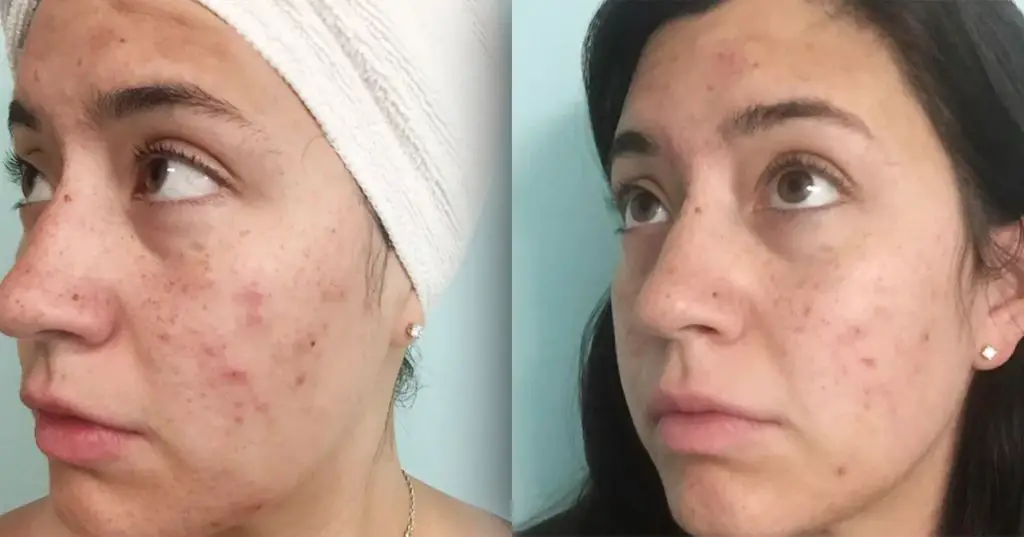How Long Should You Leave Aztec Clay On?
What is Aztec Clay?
Aztec clay, also known as Aztec Secret Indian Healing Clay, is made from 100% natural calcium bentonite clay sourced from Death Valley, California [1]. The clay consists of aged volcanic ash that is mined from the earth and sundried before processing. This mineral-rich substance has natural absorbent and exfoliating properties that have been used for centuries in skincare routines and healing practices.
Benefits of Aztec Clay
Aztec clay masks provide numerous benefits for skin due to their unique composition. Aztec clay contains high amounts of minerals like calcium, magnesium, and iron that are absorbed by the skin when applied topically (1). The most notable benefits include:
Deep Cleans Pores: The minerals in Aztec clay have a strong negative charge that bonds to the positively charged toxins, impurities, oils, and dirt in the skin. This helps pull out impurities from deep within pores to thoroughly cleanse the skin.
Exfoliates Skin: In addition to cleansing pores, the minerals gently exfoliate the top layer of skin by sloughing off dead skin cells. This reveals brighter, smoother skin.
Reduces Acne: By removing excess oils, bacteria, and toxins from pores, Aztec clay masks can help treat and prevent acne breakouts. The antibacterial properties also help kill acne-causing bacteria.
Tightens Skin: The absorbent minerals in the clay help shrink pores and tighten skin. The exfoliating effect also improves skin tone and texture for a smooth, toned appearance.
How to Apply Aztec Clay
To apply an Aztec clay mask, first mix the clay powder with equal parts apple cider vinegar or water to create a smooth paste. According to wikiHow, the apple cider vinegar helps adjust the pH level to be gentler on sensitive skin.
Use a facial brush or your fingers to apply a thin, even layer of the clay mask over your face while avoiding the eye and mouth area. Allow the mask to dry completely until it feels tight on your skin. This usually takes 15-20 minutes.
You can also apply the Aztec clay to other areas like the neck, chest, back, etc. Simply follow the same application instructions, applying a thin layer and allowing it to dry fully before rinsing.
Recommended Aztec Clay Mask Times
When using an Aztec clay mask, it’s important not to leave it on for too long. Here are some general guidelines for recommended mask times based on your skin type:

For normal skin, leave the Aztec clay mask on for 5-20 minutes. Most sources recommend starting with 5 minutes if it’s your first time using the mask, as it can feel quite tight as it dries. You can gradually increase the time up to 20 minutes as your skin adjusts. According to one source, “I usually leave it 20 mins. I [know] it gets really tight as it dries. Like, can’t open your mouth to talk.” (Source)
For sensitive skin, limit the Aztec clay mask to 3-5 minutes. As one source advises, “If you have sensitive skin, let the mask dry on your skin for only five minutes. Watch the time carefully or set an alarm to mark the exact time. As the mask dries, it will begin to feel very tight.” (Source)
Letting the mask dry completely on your face can lead to redness and irritation. It’s best to rinse off the Aztec clay mask before it is fully dry. Start with short mask times and slowly increase duration as your skin acclimates.
What to Expect
Using an Aztec clay mask often causes a tingling or tightening sensation, which is normal. The clay is drawing impurities from deep within the skin, so you may experience some tingling, stinging, or burning. This usually subsides after 5-10 minutes as your skin adjusts. Don’t wash the mask off right away if you feel some tingling. Let your skin get used to the clay.
It’s also common for the skin to turn slightly red while using the Aztec clay mask. This reddening is from increased blood circulation and oxygenation of the skin. The clay’s pulling action stimulates blood flow. Some temporary flushing is normal and will fade after removing the mask. A small amount of redness following treatment is fine, but significant irritation means the mask was left on too long.
Removing Aztec Clay
Removing the Aztec clay mask properly is an important step to avoid irritation or clogged pores. The clay can be difficult to wash off once it dries, so it’s best to remove it while still moist.
Start by wetting your face and gently massaging the clay mask to rehydrate it. Splash water on the areas with thicker clay or areas that have started to dry out. According to sources on Reddit, you can press warm water into your face and then slowly rub in circular motions to help dissolve the clay [1].
If needed, use a warm, wet washcloth to gently exfoliate and remove any remaining traces of dried clay. Take your time removing the mask without scrubbing or irritating the skin, as recommended by WikiHow [2]. Rinse thoroughly with lukewarm water until the slippery feeling is gone.
Be gentle when taking off an Aztec clay mask. Allow the water to do most of the work dissolving and rinsing away the clay. Harsh scrubbing can lead to redness and irritation. With a little warm water and patience, you can remove the clay mask without leaving pores clogged.
Aftercare
It’s important to moisturize after rinsing off an Aztec clay mask. The clay can be very drying, so you’ll want to replenish moisture. According to WikiHow, apply a hydrating serum or facial oil immediately after rinsing, then follow up with a moisturizer. Some good options are hyaluronic acid, rosehip oil, or a cream or lotion designed for dry skin.
You’ll also want to avoid excessive exfoliation after using the mask. Aztec clay on its own provides a deep clean, so harsh scrubs or peels can over-strip the skin. As recommended on Reddit, use something gentle like Thayer’s witch hazel or pure rose water followed by moisturizer. Let your skin fully recover before attempting any other exfoliating treatments.
Precautions
When using Aztec clay masks, it’s important to take some precautions to avoid potential issues.
First, it’s recommended to do a patch test before using Aztec clay for the first time. Apply a small amount to your inner arm and leave it for 10 minutes. Check for any redness, itching, or irritation before applying the clay to your face or body. This will help identify any potential allergies or sensitivities (source).
Second, be very careful to avoid getting Aztec clay near the eyes or mouth. The clay can be drying and irritating to these sensitive areas. Use petroleum jelly as a barrier around the eyes and lips (source).
Finally, do not apply Aztec clay masks to broken or damaged skin. The clay can be overly drying and may cause further irritation. Wait until any cuts, wounds, or irritations have fully healed before using the mask (source).
Mask Schedule
When using Aztec clay masks, it’s important not to overdo it. The clay can be drying and irritating if used too frequently. Here are some general guidelines for how often to use an Aztec clay mask based on your skin type:
For normal skin, aim to use an Aztec clay mask 1-2 times per week. The clay’s absorbing properties can help remove excess oils and impurities without over-drying. Spread out your mask treatments every few days for the best results.
If you have sensitive skin, limit Aztec clay masks to 1-2 times per month. The clay may cause redness and irritation if used too often. Carefully test a small amount before fully applying a mask to ensure your skin can handle it. Allow several weeks between each use.
Those with oily or acne-prone skin may be able to use Aztec clay masks up to 2-3 times per week if tolerated. But start slowly and monitor your skin’s condition. Reduce frequency if dryness or irritation occurs.
Always moisturize after using an Aztec clay mask. And consider mixing the clay with apple cider vinegar or aloe vera instead of water to create a more soothing, balanced formula for sensitive skin types.
Other Clay Mask Options
There are many different types of clay masks to choose from depending on your skin type and concerns:
Kaolin clay is a gentle yet effective clay that is great for sensitive skin. It is the mildest of the clay varieties and helps cleanse and exfoliate gently. Kaolin clay does not dry out sensitive skin types and helps improve radiance and texture without irritation. It can be used on a daily or weekly basis (source).
Rhassoul clay is excellent for dry, sensitive or mature skin types. It originates from Morocco and is rich in minerals that help boost skin hydration and elasticity. Rhassoul clay is very mild and does not strip moisture from dry skin. It leaves skin nourished and calmed while helping to cleanse pores (source).

